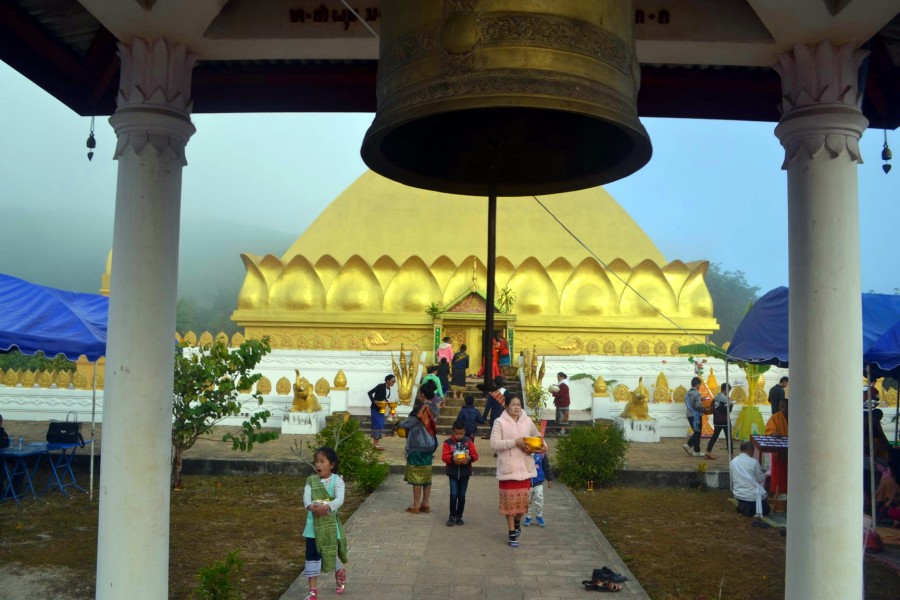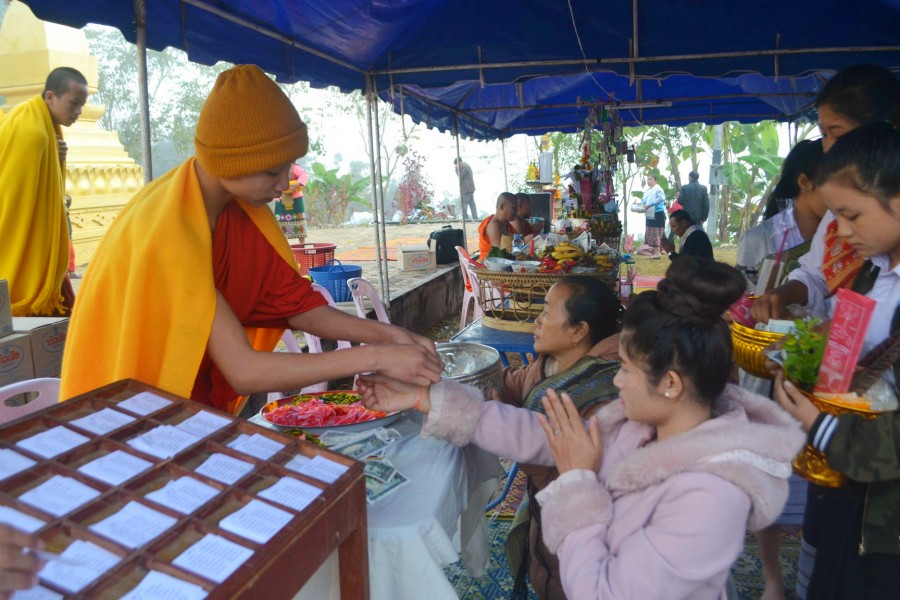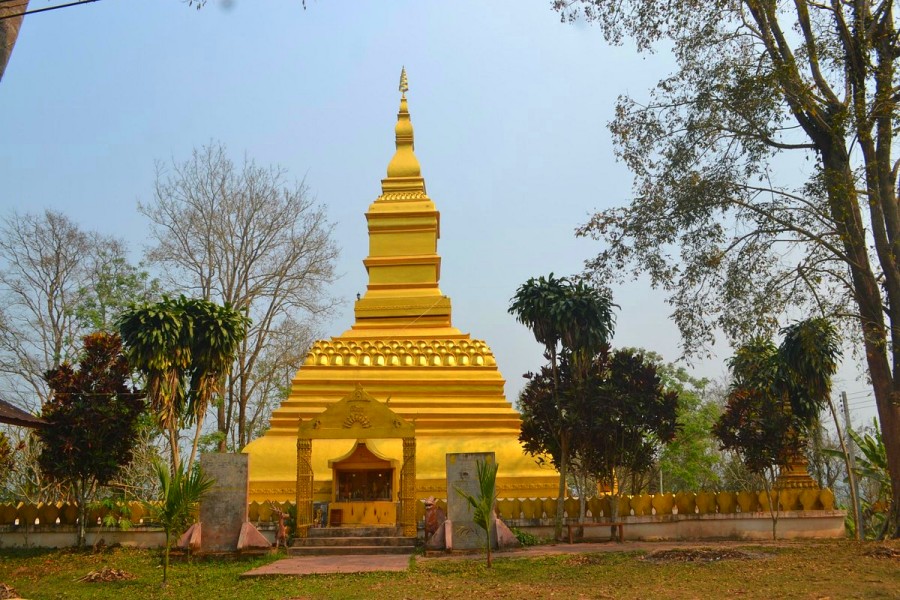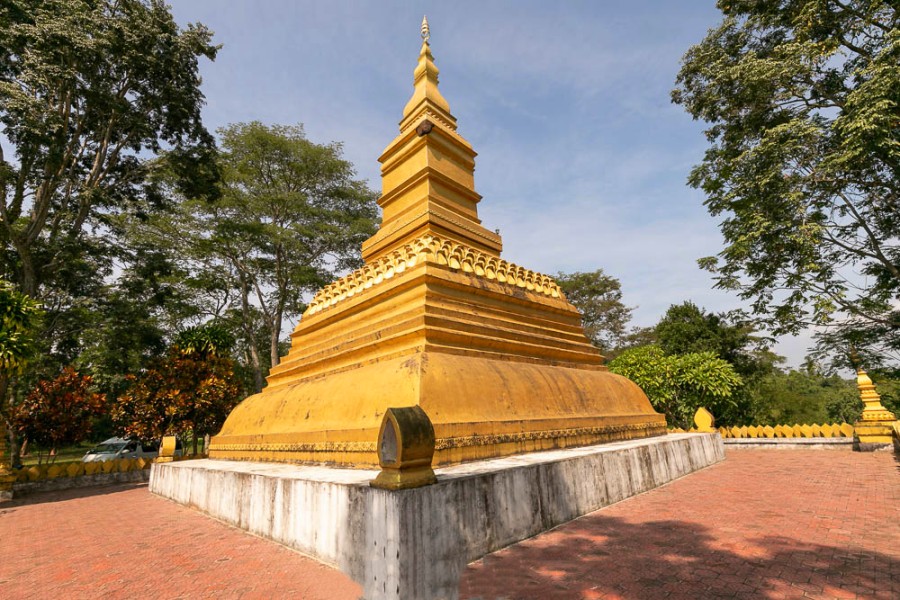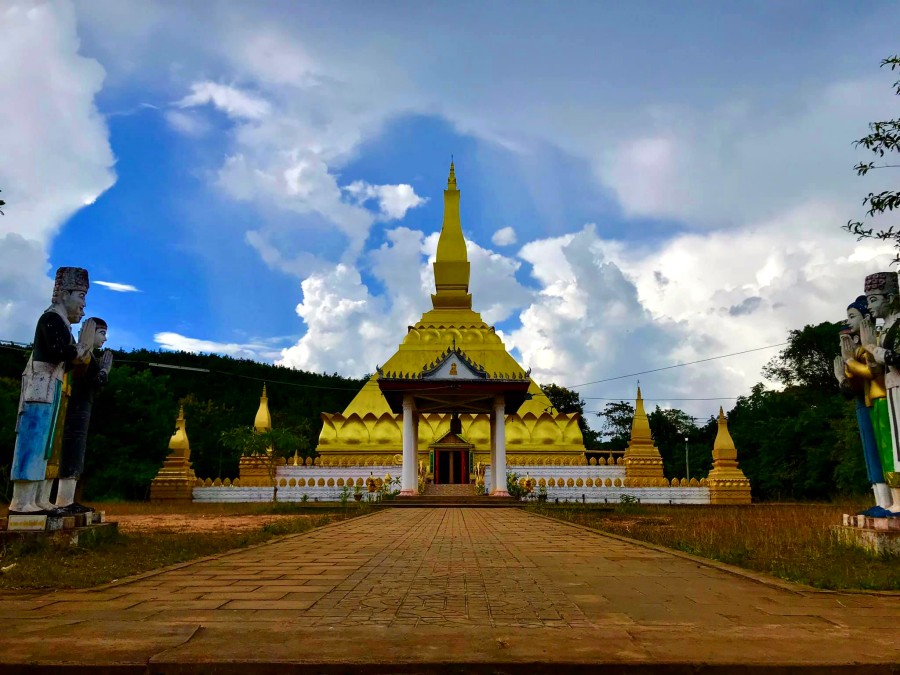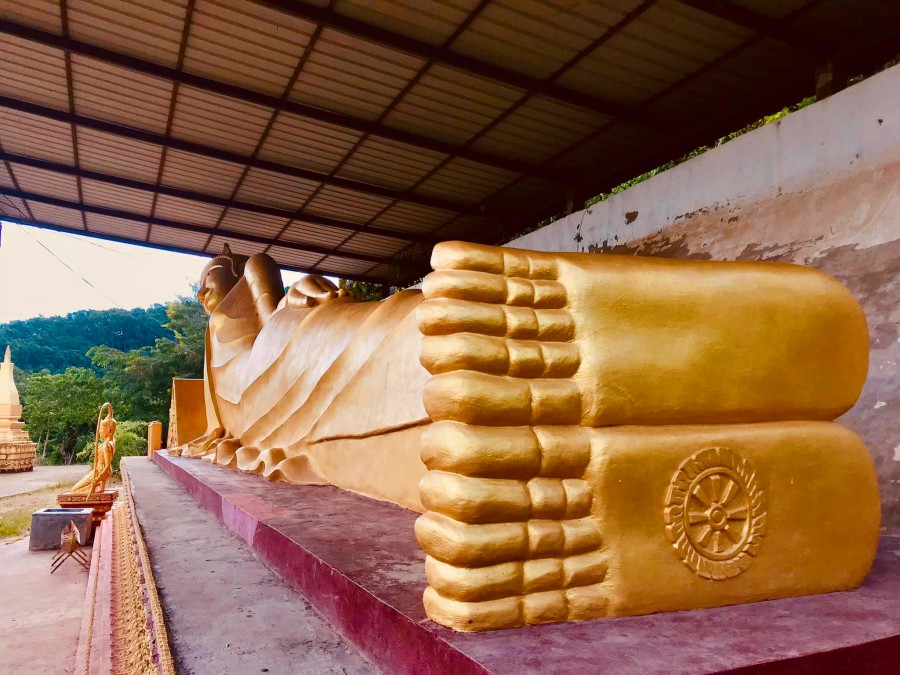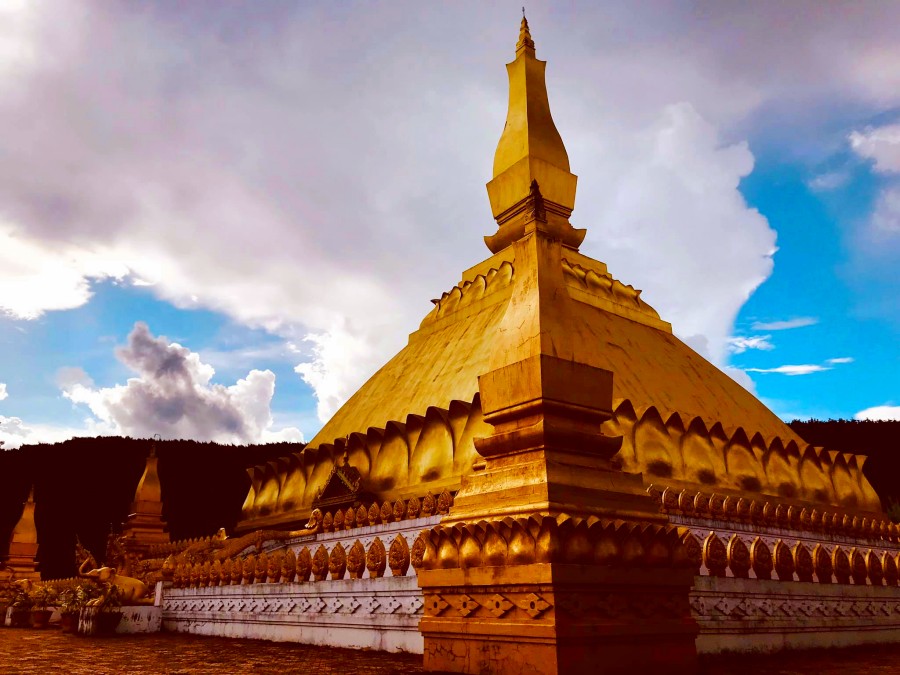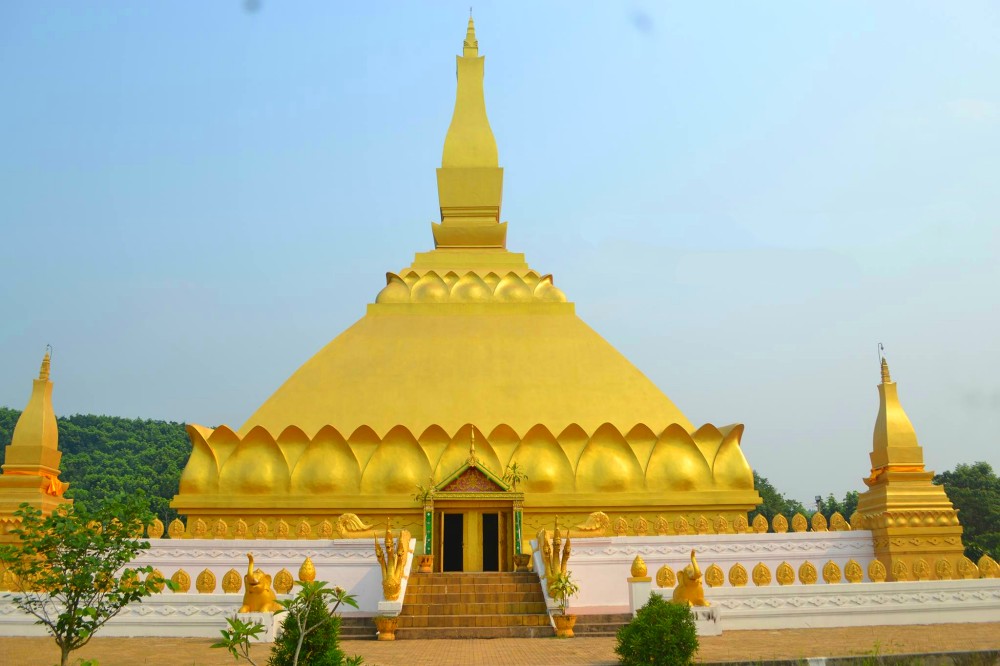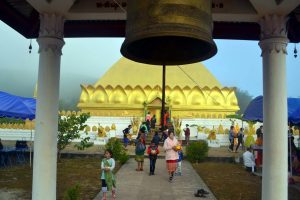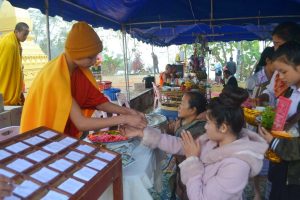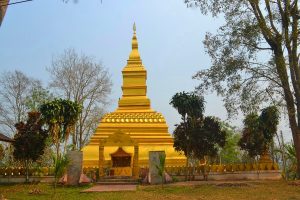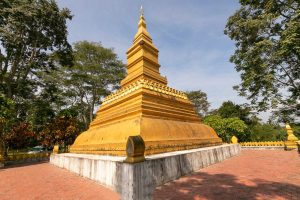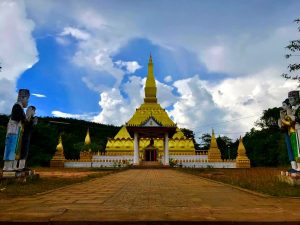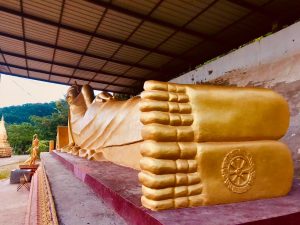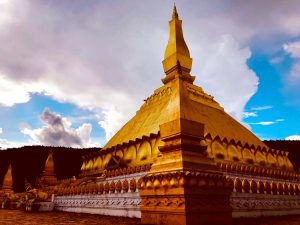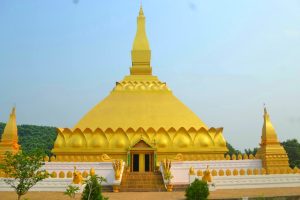Phoum Pouk Stupa, known locally as That Phoum Pouk, is a prominent Buddhist landmark in Muang Sing, Luang Namtha Province, located in the northern part of Laos. Positioned atop a hill, this sacred site offers breathtaking views of the Namtha Valley and is rich in both spiritual and historical significance. It is a perfect blend of religious devotion, cultural heritage, and natural beauty, attracting both pilgrims and tourists alike.
Overview of Phoum Pouk Stupa
The Phoum Pouk Stupa is a symbol of the long-standing Buddhist traditions in Laos, dating back to the 16th century. It stands as a reminder of the region's spiritual history, having witnessed centuries of cultural changes and historical events. It is a place where locals continue to perform religious activities, making it an integral part of the community.
Visitors flock to the stupa not only for its religious significance but also for the panoramic views it offers of the surrounding Namtha Valley and Muang Sing, making it a perfect spot for those interested in history, spirituality, and photography.
Features of Phoum Pouk Stupa
1. Scenic Views
Perched on a hilltop, Phoum Pouk Stupa offers expansive views of the Namtha Valley and the nearby mountain ranges. The stunning landscapes make it an excellent location for photographers and nature lovers. Sunrise and sunset are particularly magical, as the light casts beautiful hues over the valley below.
2. Architecture
The stupa is built in the traditional Laotian Buddhist style, with a bell-shaped structure that is richly adorned with intricate Buddhist carvings. The stupa’s main body is golden, reflecting the importance of the site to the Buddhist community. Around the stupa, you will also find various Buddhist statues and prayer flags, enhancing the sacred atmosphere of the site.
3. The Ruins of the Old Stupa
Near the newly reconstructed stupa lies the ruins of the original structure that was destroyed in 1966. The remnants of the original stupa serve as a poignant reminder of Laos' turbulent history, particularly during the Vietnam War when American bombing campaigns affected many regions, including sacred sites.
4. Buddhist Relics
The stupa is believed to house Buddha relics, making it an important pilgrimage site for Buddhists. Visitors often come here to make offerings, meditate, and participate in religious ceremonies.
History of Phoum Pouk Stupa
Early Construction
The original stupa was built in 1628 during the reign of King Fa Ngum, the founder of the Lan Xang Kingdom. It was constructed as a neutral zone between the kingdoms of Lane Xang (in Luang Prabang) and Lane Na (in Chiang Mai, Thailand), two major political entities of the time. Its strategic location symbolized the peacekeeping role of Buddhism in the region.
Destruction and Reconstruction
In 1966, during the Vietnam War, the Phoum Pouk Stupa was destroyed by an American bomb, along with many other cultural landmarks in Laos. The original stupa was obliterated, leaving only the ruins as a witness to the region’s troubled past.
In 2003, a new stupa was constructed near the ruins to restore the sacred site and continue the religious significance of the location. The new stupa maintains the traditional design and serves as a reminder of the enduring spiritual heritage of the region.
Cultural and Religious Role
Throughout its history, Phoum Pouk Stupa has played a key role in the Buddhist and local religious life. It is considered a symbol of peace and a unifying force for the diverse ethnic groups of the region, including the Lao, Khmu, and Hmong people. The stupa also continues to host various religious ceremonies and local festivals that celebrate the Buddhist faith and Laotian traditions.
Entrance Tickets
Phoum Pouk Stupa does not charge an entrance fee, making it an affordable destination for visitors. However, donations are encouraged and appreciated to help maintain the site. It is also customary for visitors to contribute by purchasing offerings such as candles, incense, and flowers, which are presented as a mark of respect during the visit.
Location and Address
The Phoum Pouk Stupa is located in Muang Sing, approximately 55 kilometers northwest of Luang Namtha town, in Luang Namtha Province, northern Laos. It is situated on a hilltop near the village of Nam Ngaen in the Namtha Valley.
Address:
- Phoum Pouk Stupa
- Muang Sing District
- Luang Namtha Province, Laos
How to Get There (Transportation)
1. By Bus
From Luang Namtha, you can take a local bus to Muang Sing, which is approximately 55 km away. The bus ride takes about 2 hours, and buses leave from the Luang Namtha Bus Station. Once you arrive in Muang Sing, you can easily walk or rent a bike to reach the stupa.
2. By Tuk-Tuk
For more comfort and convenience, you can hire a tuk-tuk from Luang Namtha to Muang Sing. Tuk-tuks are widely available and provide a more direct route to the stupa, though they are generally more expensive than buses.
3. By Private Car
For a more personalized and flexible experience, renting a private car is an excellent option. This allows you to travel at your own pace and access the stupa directly. The drive from Luang Namtha to Muang Sing takes about 1.5 to 2 hours, depending on road conditions.
Once in Muang Sing, the stupa is easily accessible on foot or by bicycle. It is centrally located within the town, making it a short and enjoyable walk from the town center.
Travel Tips for Visiting Phoum Pouk Stupa
1. Dress Respectfully
As a sacred Buddhist site, it is important to dress modestly. Both men and women should wear clothes that cover the shoulders and knees. Avoid wearing sleeveless tops or shorts that are too short. This shows respect for the local customs and traditions.
2. Remove Your Shoes
Visitors are expected to remove their shoes before entering the stupa or any sacred areas. It is advisable to wear easy-to-remove footwear, such as sandals, to make the process more convenient.
3. Bring Essentials
The site is located on a hill, so it's important to bring water to stay hydrated, especially during the hot months. You may also want to bring sunscreen and a hat to protect yourself from the sun.
4. Respect Local Customs
While visiting the stupa, remember to respect local customs. Avoid making loud noises, climbing on the stupa, or touching sacred objects. It’s best to observe the religious ceremonies quietly and respectfully.
5. Take a Guide
If you want to gain a deeper understanding of the history and significance of the stupa, consider hiring a local guide. They can provide you with valuable insights into the cultural and religious aspects of the site.
6. Arrive Early
To avoid the crowds and experience the peaceful ambiance of the stupa, try to arrive early in the day. Early mornings also offer the best photography opportunities, with soft light and cooler temperatures.
7. Plan for the Dry Season
The best time to visit Phoum Pouk Stupa is during the dry season from November to February. During this period, the weather is cooler, making the hike and exploration more comfortable.
Phoum Pouk Stupa is a captivating site that combines history, spirituality, and natural beauty. Its architectural splendor, religious significance, and stunning views make it an ideal destination for anyone seeking a deeper connection with the cultural and spiritual life of Laos. Whether you are a history buff, a spiritual seeker, or simply someone looking for a peaceful escape, Phoum Pouk Stupa offers a profound and enriching experience.


 Tours
Tours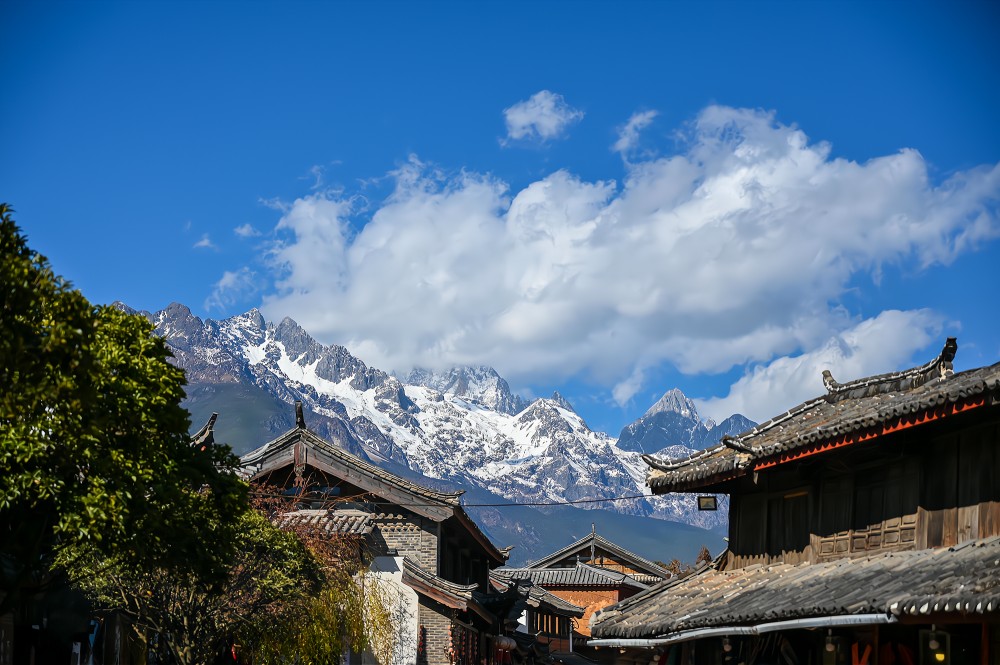

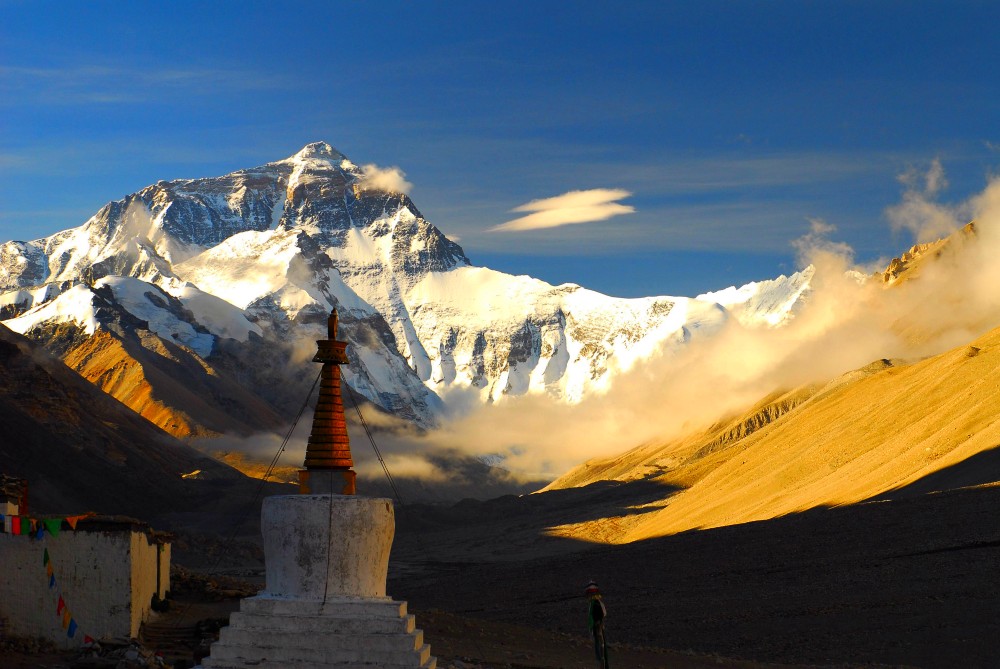
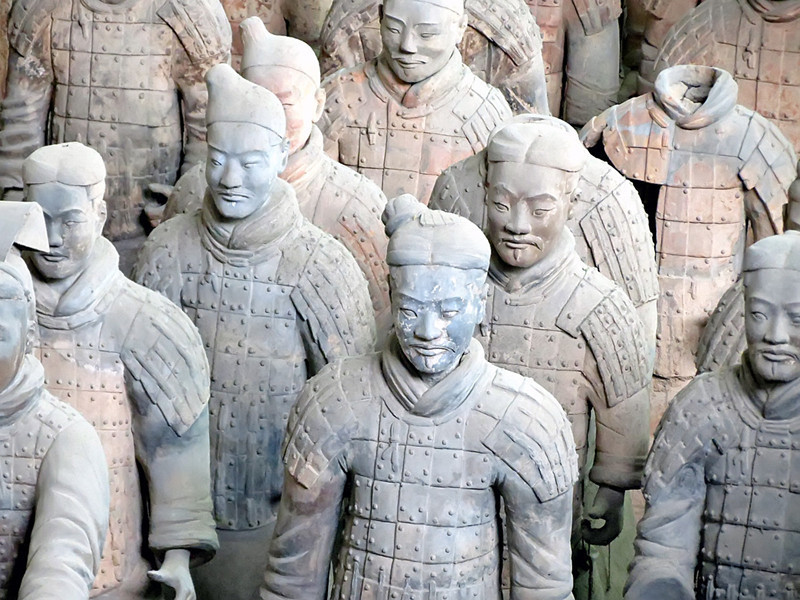
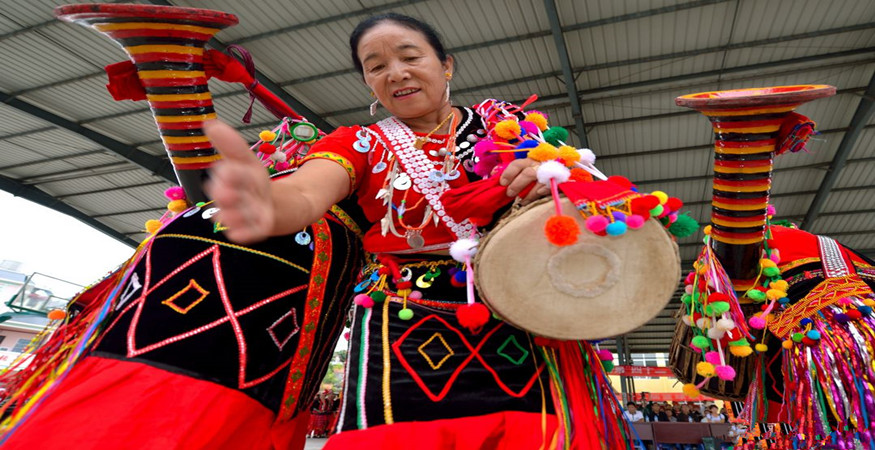
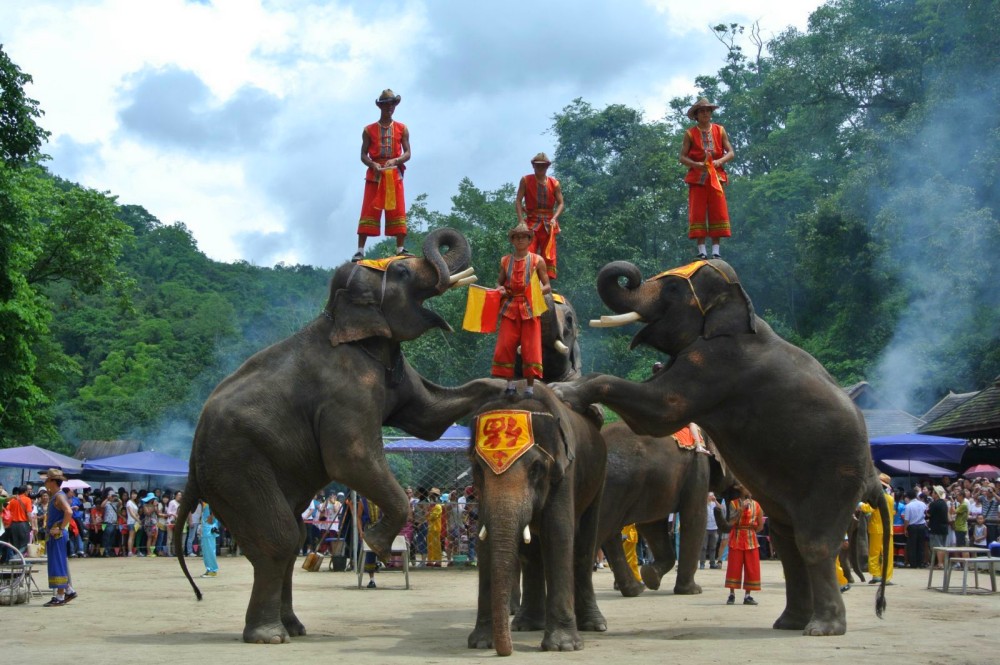

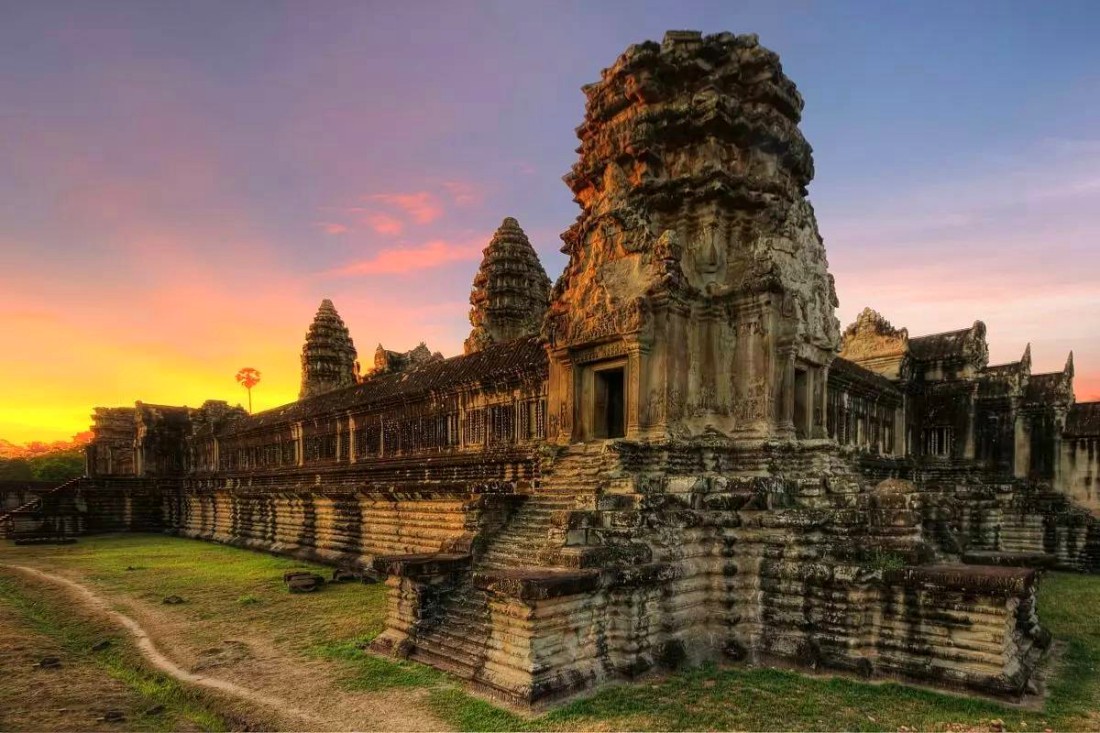
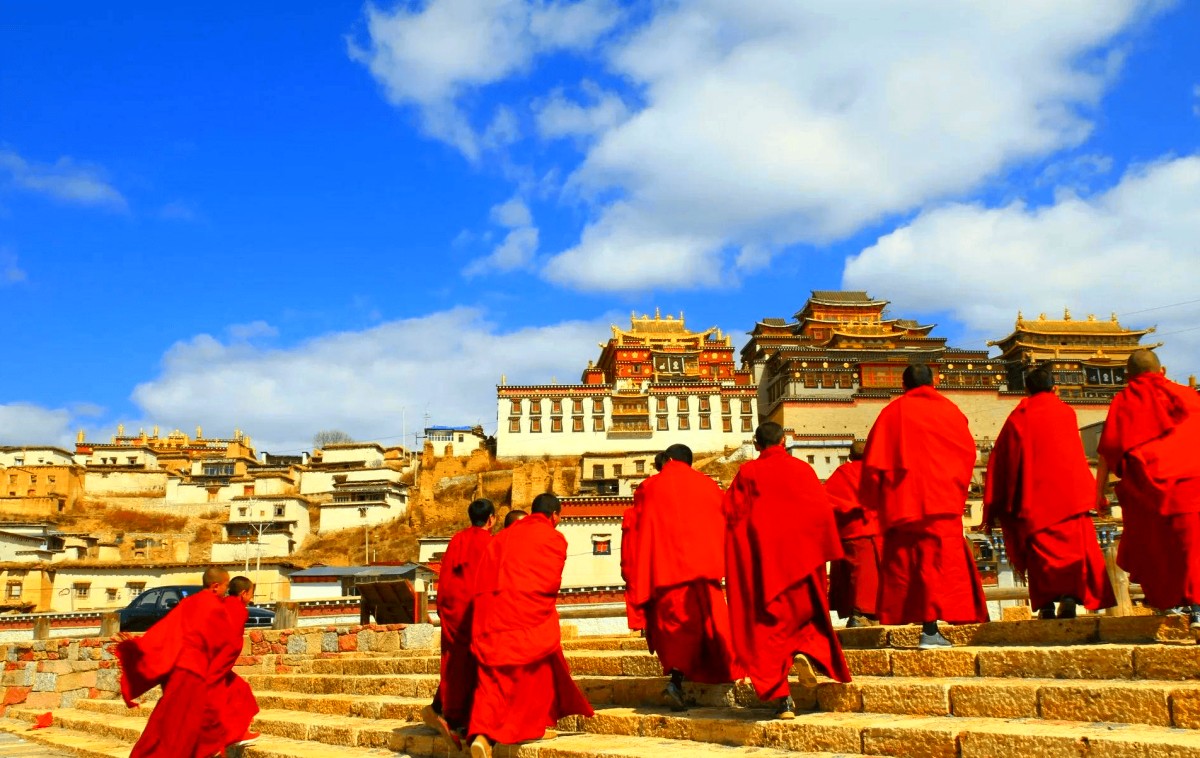
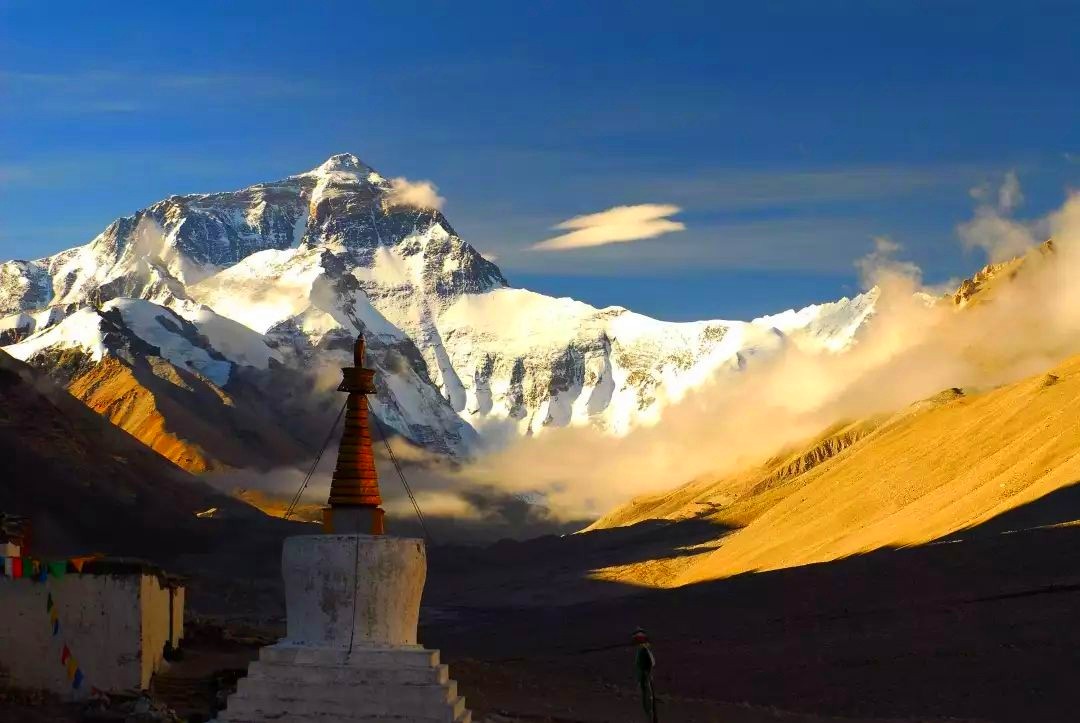
 Destinations
Destinations Attractions
Attractions Golf
Golf Customize
Customize About Us
About Us Contact
Contact


